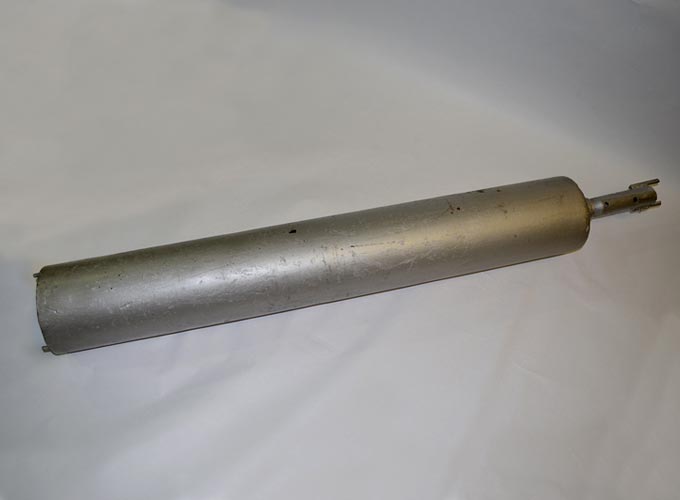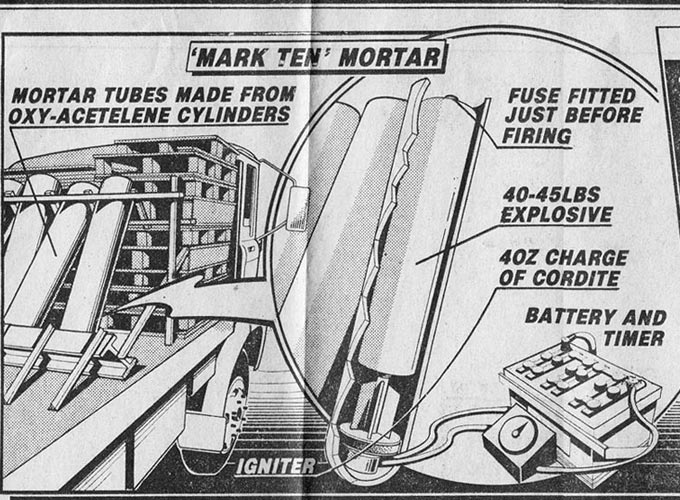Description
An unexploded Mark 10 Mortar from the attack on Newry Police Station in 1985. Newry, being situated close to the border, was heavily patrolled by the Royal Ulster Constabulary (RUC) and British army. Due to the high level of paramilitary activity in the area, the large red brick police station was protected by a 20ft high wall of concrete and corrugated iron. As space was at a premium in the busy station, the canteen was situated in a portable building in the yard. On 28 February 1985, nine 45lb mortars were fired at the station but only one exploded inside the barracks. The canteen suffered a direct hit and nine out of the ten people inside were killed. The mortars were made out of gas cylinders filled with explosive with stabilizing fins welded to the rear. The bombs, which were designed to go off on impact, were inaccurate and indiscriminate. The mortars were fired from steel piping tubes attached to a steel frame welded onto a back of a stolen lorry. The lorry, hidden in a disused creamery yard nearby, was lined up in the direction of barracks using the station's radio masts.
The attack on Newry Police Station was part of an Provisional Irish Republican Army (PIRA) bombing campaign of RUC stations during 1985 and 1986. Bombs and mortars destroyed Plumbridge RUC barracks and damaged Enniskillen Training Centre and a number of other police stations. The campaign also involved the intimidation of civilian workers in order to prevent the repair or rebuilding of damaged stations. Contractors refused to carry out building work on affected stations and the Royal Engineers were flown in to carry out urgent repairs. All civilians working for or supplying security forces were labeled as “legitimate targets” and a number of contractors were killed by the PIRA. During the campaign, businesses placed advertisements in local papers announcing their withdrawal of services from the security forces.



